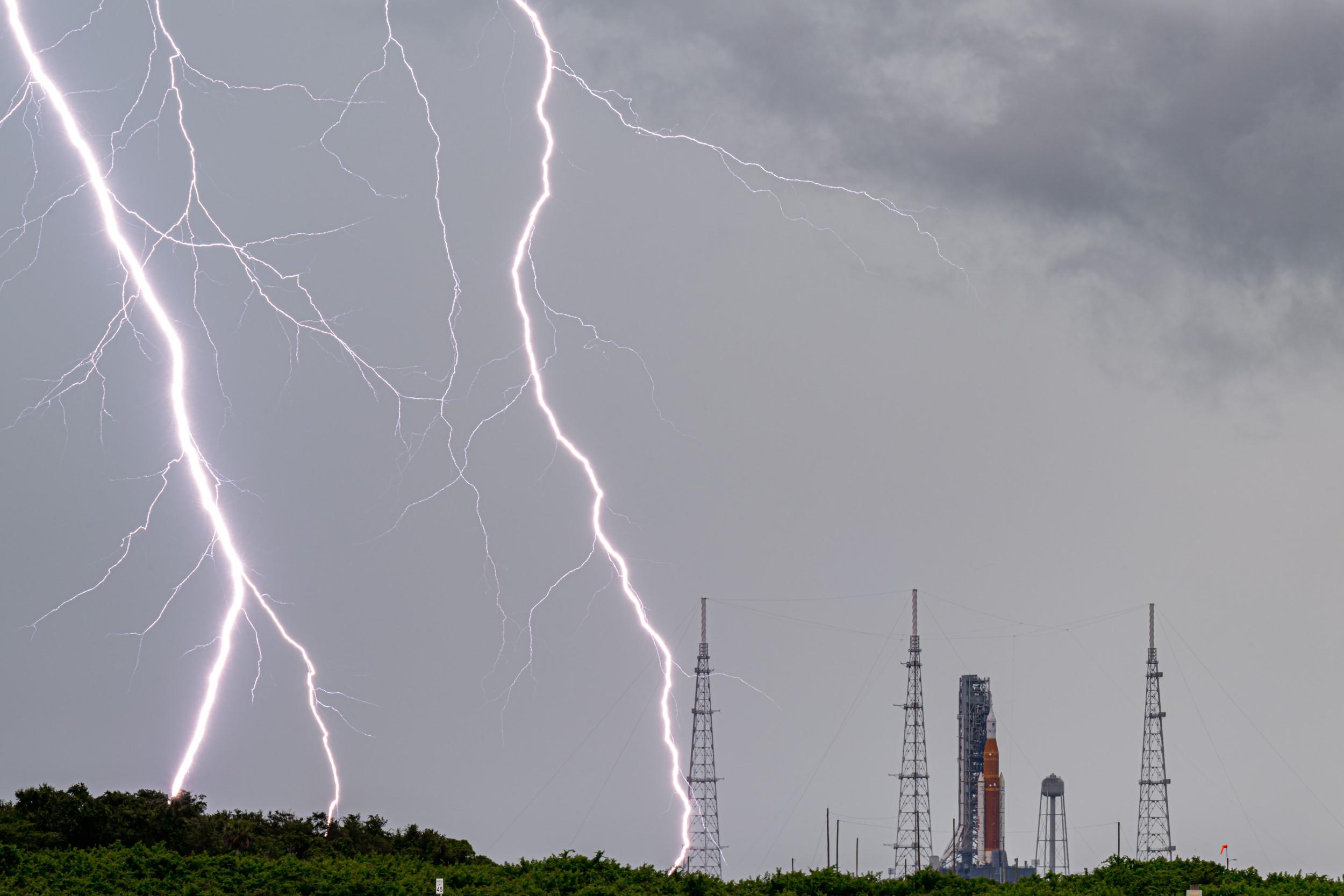
CAPE CANAVERAL -- The two-day countdown to launch of NASA’s first Space Launch System (SLS) rocket began as scheduled on Aug. 27, with no technical issues and a 70% chance of acceptable weather for liftoff on Aug. 29.
Engineers, however, were assessing the impact of three lightning strikes at Kennedy Space Center Launch Complex 39B, where the SLS and Orion spacecraft were being prepared for a launch attempt between 8:33-10:33 a.m. EDT.
“Our potential outcomes on Monday are that we could go within the window or we could scrub for any number of reasons,” Artemis Mission Manager Mike Sarafin told reporters on Aug. 27. “We could have weather or technical issues, or we could have a range- and public-safety hold or a combination of those, but we do feel good about our attempt on Monday. We’re ready to proceed.”
The launch will test the performance of the SLS, a two-stage, liquid-fueled, expendable vehicle which in its initial configuration is designed to send nearly 60,000 lb. toward lunar orbits.
For Artemis I, the SLS is expected to put an uncrewed Orion spacecraft on a trajectory to the Moon, a mission that requires a record-long,1,080-sec. burn of the Aerojet Rocketdyne RL10 engine that powers the SLS upper stage. The burn would be 100 sec. longer than the RL10 engine firing.
The single-engine Interim Cryogenic Propulsion Stage (ICPS) is expected to be upgraded to the four-engine Exploration Upper Stage beginning with SLS’s fourth flight.
Artemis I begins with a test of the SLS, but once the ICPS separates about 2 hrs. 5 min after liftoff, the focus of the Artemis I flight test shifts to the Orion spacecraft, which is designed to carry four astronauts into deep space for 21 days.
The flight plan calls for Orion to spend twice that amount of time in the high-radiation environment of deep space, beyond the protective bubble of Earth’s magnetosphere as it travels as far as 40,000 mi. past the Moon in its so-called distant retrograde orbit.
“This is a very risky mission,” said Jim Free, NASA associate administrator for the Exploration Systems Development Mission Directorate. “We have simple, but aggressive objectives.”
Topping the list: demonstrating Orion’s heat shield during its 24,500 mph return from lunar orbit and recovery of the spacecraft which is targeted to splash down off the coast of San Diego on Oct. 10 if launch occurs on Aug. 29.
NASA expects to begin filling the SLS core and upper stage with 733,000 gallons of liquid hydrogen and liquid oxygen shortly after midnight on Aug. 29. If tanking proceeds as planned, the launch team will begin a special test around 3:30 a.m. to assess if a previously detected hydrogen leak was successfully repaired.
The leak, which occurred during a fourth and final tanking test on June 20, was in a 4-in. quick-disconnect fitting that attaches from the tail service mast on the mobile launcher to the rocket’s core stage.

